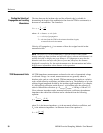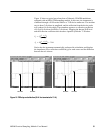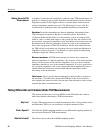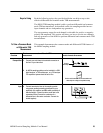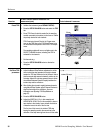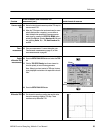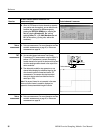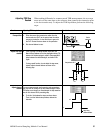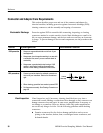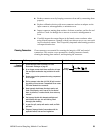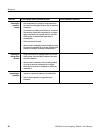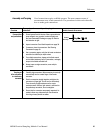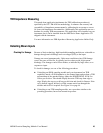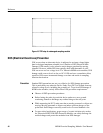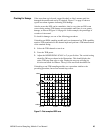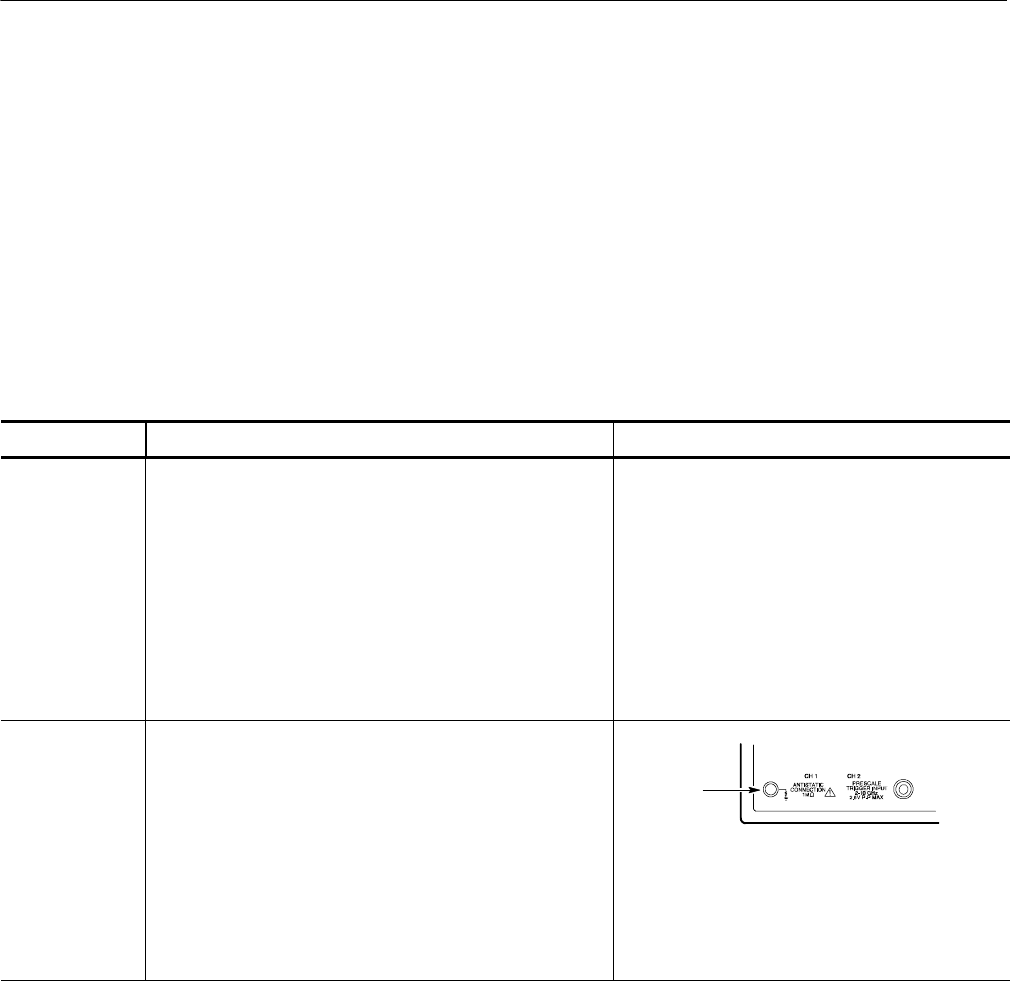
Reference
38
80E00 Electrical Sampling Modules User Manual
Connector and Adapter Care Requirements
This section describes proper care and use of the connector and adapter for
electrical modules, including protection against electrostatic discharge (ESD),
cleaning connectors, and the assembly and torquing of connectors.
Protection against ESD is essential while connecting, inspecting, or cleaning
connectors attached to a static-sensitive circuit. Static discharges too small to be
felt can cause permanent damage, and devices under test can carry an electrostat-
ic charge. To prevent damage to devices and components, use the procedures that
follow.
Overview To protect against ESD Control elements & resources
ESD prevention 1. Always use a grounded antistatic mat in front of your
test equipment.
2. Always wear a heel strap when working in an area wit h
a conducti ve floor, even if you are uncertain about its
conductivity.
3. Always wear a grounded wrist strap havinga1MΩ
resistor in series when handling components and
devices or when making connections to the test set.
ESD procedures 1. Connect your wrist strap to t he antistatic connector on
the front of your instrument. Refer to the illustration at
right.
Connect
wrist strap
2. When cleaning, ground the hose nozzle to prevent ESD.
3. Set the pressure correctly. See Cleaning Connectors on
page 39.
Visual inspection, and, if necessary, cleaning should be done every time a
connection is made. Making a connection with a damaged or dirty connector can
damage connectors beyond repair. In some cases, magnification is necessary to
see damage to a connector. However, defects visible only under magnification
are not the only thing to look for. Use the following guidelines when checking
connectors:
H Examine connectors first for obvious damage and defects such as worn
plating on the interface; broken, bent, or misaligned center conductors; and
deformed threads.
Electrostatic Discharge
Visual Inspection



